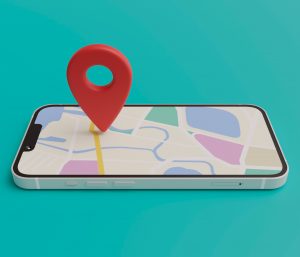Amidst this digital cacophony, the effectiveness and efficiency of User Experience (UX) and User Interface (UI) design emerge as paramount. They are the twin pillars upon which the success of a website hinges, capable of making or breaking its impact and functionality.
The Power of First Impressions
The adage “first impressions matter” rings especially true in the realm of website design. Users form judgments about a website’s credibility, trustworthiness, and usability within milliseconds of landing on a page. This snap judgment is predominantly influenced by the website’s visual appeal and ease of navigation, which are directly shaped by UX and UI website design.
Understanding UX and UI Design
Before delving into the importance of UX and UI design, it’s crucial to distinguish between the two.
User Experience (UX) Design: UX website design focuses on enhancing user satisfaction by improving the usability, accessibility, and overall pleasure provided during the interaction between the user and the product. It encompasses various elements such as information architecture, user research, wireframing, and prototyping.
User Interface (UI) Design: UI website design, on the other hand, is concerned with the look and feel of the website, encompassing visual elements like layout, colors, typography, and interactive elements such as buttons and forms. It’s about creating an aesthetically pleasing interface that facilitates seamless interaction.
The Nexus of UX and UI Design
While UX and UI website design are distinct disciplines, they are inherently interconnected. A visually stunning interface without intuitive navigation is akin to a beautiful façade with no substance, while a well-structured UX without appealing aesthetics might fail to captivate the user’s attention.
The Importance of User Journey in Website Design
At the heart of UX website design lies the concept of the user journey – the path a user takes while navigating through a website. A meticulously crafted user journey anticipates user needs, guides them seamlessly through the website, and culminates in a desired action, whether it’s making a purchase, signing up for a newsletter, or filling out a contact form.
Elements of an Effective User Journey
- Intuitive Navigation: Users should be able to find what they’re looking for without undue effort. Clear navigation menus, logical categorisation, and easily accessible search functionalities are essential components of intuitive navigation.
- Consistent Design Language: Consistency breeds familiarity and reduces cognitive load. A uniform design language across all pages instills a sense of coherence and makes it easier for users to navigate the website.
- Responsive Design: With the proliferation of mobile devices, responsive design has become imperative. A website that adapts seamlessly to various screen sizes ensures a consistent user experience across devices.
- Engaging Content: Compelling content keeps users engaged and encourages them to delve deeper into the website. Whether it’s informative articles, captivating visuals, or interactive multimedia, content should be tailored to the target audience’s preferences and needs.
- Clear Call-to-Actions (CTAs): CTAs serve as signposts, guiding users towards desired actions. They should be prominently displayed, visually distinct, and accompanied by persuasive copy that prompts users to take action.
The Impact on Lead Generation
An effectively designed user journey isn’t merely about enhancing user experience; it’s also a potent tool for lead generation. By understanding the needs, motivations, and pain points of their target audience, businesses can tailor the user journey to gently nudge users towards conversion points.
Leveraging UX and UI Design for Lead Generation
- Streamlined Conversion Funnel: A well-optimised user journey funnels users towards conversion points in a seamless manner. By minimising friction and eliminating unnecessary steps, businesses can increase the likelihood of conversions.
- Personalisation: Personalised experiences resonate more deeply with users. Leveraging data analytics and user segmentation, businesses can customise the user journey to cater to the unique preferences and behaviors of different audience segments.
- A/B Testing and Iteration: The beauty of digital design lies in its malleability. A/B testing allows businesses to experiment with different design elements, CTAs, and user flows to identify the most effective strategies for lead generation.
- Feedback Loops: Continuous feedback is essential for refining and optimising the user journey. Whether through user surveys, heatmaps, or session recordings, gathering insights into user behavior enables businesses to iteratively improve their website’s UX and UI design.
Case Studies: The Power of Effective UX and UI Design
Numerous case studies underscore the transformative impact of UX and UI website design on website performance and lead generation. From e-commerce giants like Amazon to tech titans like Google, exemplary user experiences have been instrumental in propelling these companies to the summit of success.
In an increasingly digitalised world, the significance of UX and UI design cannot be overstated. They serve as the linchpin of a website’s efficacy, dictating its ability to captivate, engage, and convert visitors. By prioritising user needs, crafting intuitive user journeys, and leveraging design principles to enhance visual appeal and usability, businesses can harness the full potential of their online presence, driving leads, and fostering lasting relationships with their audience. In the digital arena, where competition is fierce and attention spans fleeting, the difference between success and obscurity often boils down to the effectiveness and efficiency of UX and UI design.




